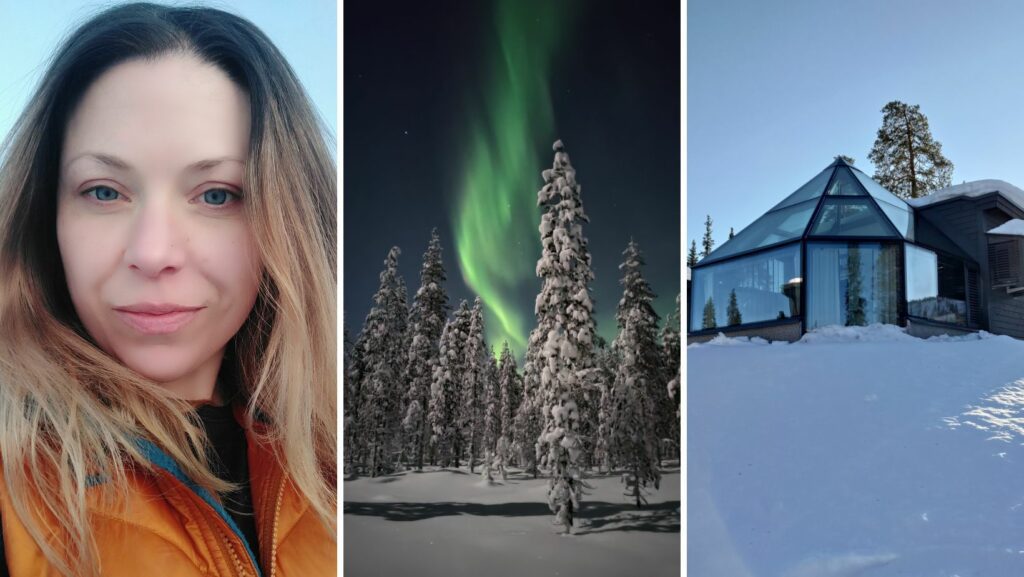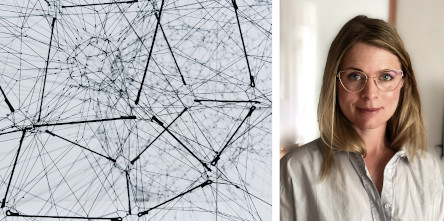This article has been translated with DeepL.
NEW RESEARCH | Why the tourism industry is booming in the North
- Published: 23 Apr 2024,
- 2:04 PM
- Updated: 23 Apr 2024,
- 11:48 AM

More and more small businesses in northern Sweden are offering Arctic nature and cultural experiences. But the surge of local entrepreneurs in recent years is no coincidence.
In addition to skiing, the opportunities for adventure are almost endless in Lapland, Västerbotten and Norrbotten. And it was the popular ice hotel in Jukkasjärvi that put Arctic tourism on the map. The ice hotel became the key to the concept and opened up a range of innovative ideas for nature and cultural experiences in the area.
– Snowmobile and dog sledding tours, reindeer safaris and northern lights viewing to name a few. And there are a lot of Sami companies that offer tourists the opportunity to experience Sami culture up close,” says Dorothee Bohn, Umeå University.
In her doctoral thesis in human geography, she has studied the emergence of Arctic tourism and its role in regional development in sparsely populated areas in northern Sweden and Finland.
Finland focuses on volume – Sweden on luxury
Already in the late 1970s, the Finnish state invested in tourism development in Finnish Lapland, much earlier than northern Sweden did. A number of small resorts emerged that focused solely on Arctic tourism. Today, the Finnish market consists mainly of small businesses and a few large corporate chains, where both employees and visitors are largely international. The situation in Sweden is different.
– Unlike Finland, which focuses on volume, northern Sweden focuses on smaller and more exclusive venues. Here, tourism consists mainly of micro-entrepreneurs who have several jobs adapted to the season. Maybe you organize overnight stays in ice and glass igloos in the winter as an entrepreneur, but work as an employee in a store in the summer.
The important role of social media
Around 2015, demand for Arctic tourism exploded, and the market has been growing steadily ever since.
– Images of beautiful Northern Lights in people’s Instagram feeds have definitely driven demand nationally and internationally, says Dorothee Bohn.
At the same time as the rise of social media, work was underway on tourism development in northern Sweden.
– Since the mining industry is so prominent there, and many people are expected to move north, the tourism industry was considered worth investing in.
For example, the public and private sectors in Sweden and Finland jointly invested in establishing the Arctic for international tour operators in the period 2015-2022. With the project, the market took off, with more and more small businesses in Northern Sweden offering nature experiences to an international market.
– Municipalities and regions in the Arctic region are investing in entrepreneurship at all levels of society. Entrepreneurship courses are available from pre-school to university level. And the public sector is committed to reaching out to all citizens to inspire them to start a business,” says Dorothee Bohn.
Strategic work has created a major trend
The Swedish Lapland Visitors Board has been central to this development. They have offered entrepreneurship training, built business networks and invested heavily in marketing the region in Sweden and internationally. They also work towards sustainable tourism development.
– Entrepreneurship is a strong trend today, people in the region inspire each other to start tourism businesses as a side activity. There is indeed a tangible societal change taking place.
What innovations in Arctic tourism can we expect in the future?
– Luxury tourism is starting to take off. Living comfortably in the middle of nature, and perhaps experiencing the northern lights before bedtime, appeals to modern people, says Dorothee Bohn.
Contact dorothee.bohn@gmail.com
Dorothee Bohn’s tips for promoting sustainable entrepreneurship and innovation in the tourism sector
- Plan well for the type of tourism that may be suitable for the location. Does the area appeal mainly to national or international tourists? What resources exist that we can create experiences from? What about transport infrastructure?
- Include locals on the trip. What kind of people live on the site? Are the people there interested in having tourism?
- Build resilience with a diverse business structure. Crises come and go, so allowing small businesses in the tourism sector to make multiple livelihoods creates economic and societal resilience.
- Make a plan for the future. With the green transition in northern Sweden, more and more people will move there. How can local tourism take advantage of this influx of new people?
More about the thesis Dorothee Bohn recently defended her PhD thesis in Human Geography at Umeå University with the thesis Arctic geographies in the making: understanding political economy, institutional strategic selectivity, and agency in tourism pathway development.
Read also:
Small tourism businesses make a big difference in rural areas
Green initiatives and skills management are the future of the tourism industry
BOOK TIP | Innovations for sustainable tourism
Hello there! Tim Foster – Research leader for the project ‘Growing green’



